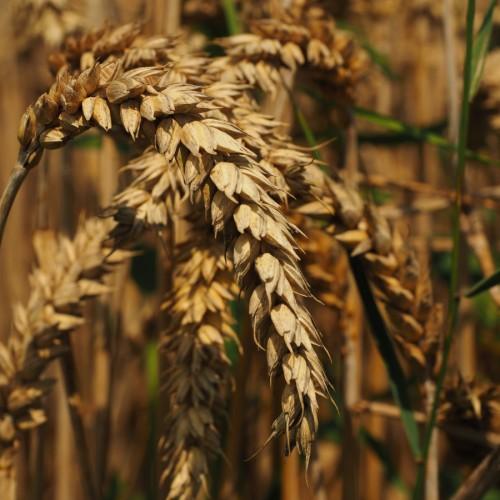
wheat
Triticum spp.
Cycle:
Annual
Watering:
Average
Hardiness Zone:
3
Flowers:
Flowers In Spring
Sun:
Full sun
Soil:
Alkaline, Well-drained
Fruits:
Fruits In Summer Ready In Autumn
Edible:
Yes
Leaf:
Yes
Growth Rate:
High
Drought Tolerant:
Yes
Salt Tolerant:
Yes
watering
Wheat (Triticum spp.) should be watered about once a week, but the amount of water needed can vary depending on the climatic conditions and the current stage of the plant's growth. The best way to determine how often and how much wheat should be watered is to check the soil moisture. A good rule of thumb is to water wheat when the top 1-2 inches of soil turn dry. If the soil looks and feels dry, it's time to water. When watering wheat, it's better to give the plant a deep drink less frequently, rather than shallow, frequent waterings. Aim for about 1 - 1 ½ inches of water per week for the best results.
sunlight
Wheat (Triticum spp.) requires plenty of sunshine for optimal growth and development. It needs 6 to 8 hours of direct sunlight each day during its growing season, which is usually from mid-spring to early autumn. The amount of direct sunlight wheat needs may vary slightly depending on the weather, geographical location, and variety of wheat cultivar. Note that during the hottest summer months, wheat will benefit from some afternoon shade to help protect it from excessive heat. Additionally, most wheat varieties do not require long night exposure, as they do not require short days and long nights to initiate flowering or grain formation.
pruning
Wheat (Triticum spp.) requires minimal pruning. Pruning should only be done when necessary and should be limited to dead, diseased, or weak stems. Wheat typically only requires pruning every few years, or when new shoots become too large and dense to allow light and air movement through the center of the plant. Any pruning should be done in the spring once new growth has begun, and it is best done before the plant goes dormant for the winter. When pruning, only remove a few stems at a time and make sure to leave some small shoots intact to ensure the plant can still produce grain.
